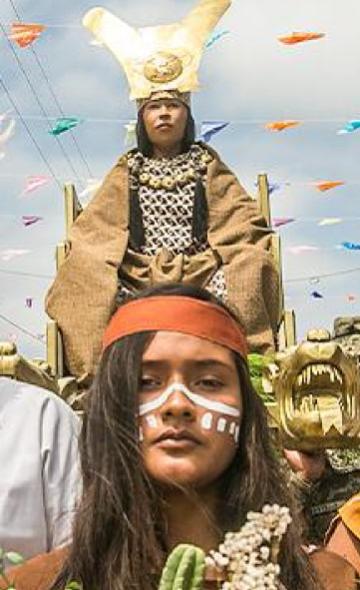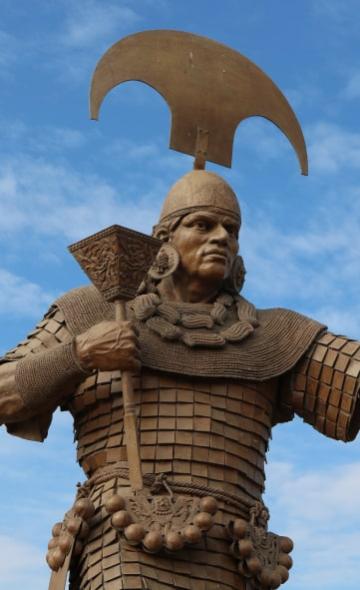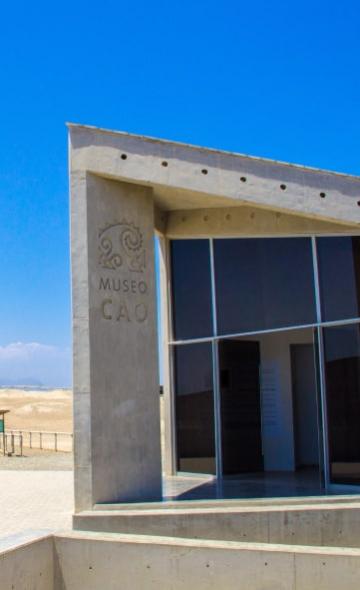- Visitors
- Researchers
- Students
- Community
- Information for the tourist
- Hours and fees
- How to get?
- Activities El Brujo
- Virtual tours
- Classic route
- Mystical route
- Specialized route
- Site museum
- Know the town
- Cultural Spaces
- Cao Museum
- Huaca Cao Viejo
- Huaca Prieta
- Huaca Cortada
- Ceremonial Well
- Walls
- Play at home
- Puzzle
- Trivia
- Memorize
- Crosswords
- Alphabet soup
- Crafts
- Pac-Man Moche
- Workshops and Inventory
- Micro-workshops
- Collections inventory
- News
- Students
- 10 Things that you didn't know about the Lady of Cao
News
CategoriesSelect the category you want to see:
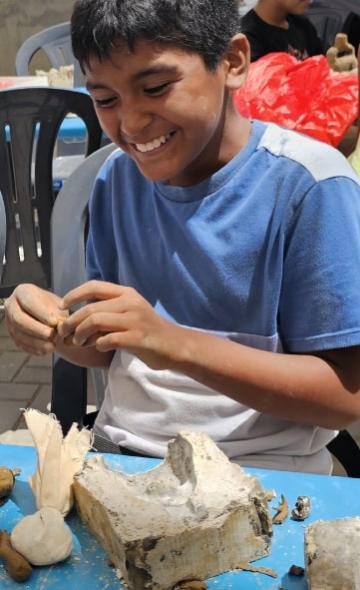
With enthusiasm, we concluded in March the summer workshops held free of charge at the facilities of the El Brujo Archae ...
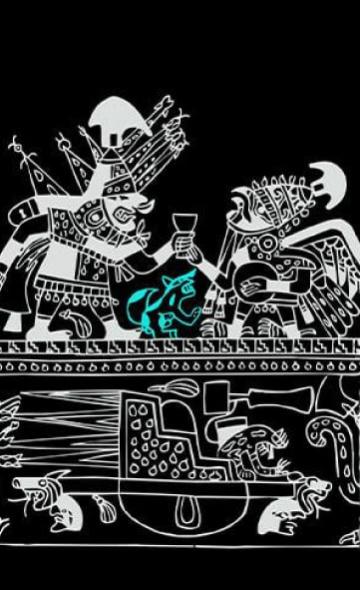
The Mochica society was a cultural group that settled mainly on the northern coast of Peru, in pre-Hispanic times. This ...
To receive new news.
The Lady of Cao is considered to be one of the most important archaeological finds in Peruvian archaeology. Thanks to her discovery, it has been possible to learn more about the role of women in ancient Mochica society; as well as relevant facts that correspond to the organization of said society. In this post, we share 10 things that you didn't know about this personage.
A pitcher was the first indication of the Lady of Cao, as well as other vessels associated with the burial
The first indicator of the existence of the funerary context of the Lady of Cao was a pitcher. It features the face of an owl made with incisions and a slightly creamy and polished engobe.
.jpg)
In the funerary context of the Lady of Cao, a teenager was found
As part of the offerings that accompanied the Lady of Cao, the team found the body of a teenager who had minimal funerary treatment. The teenager might have died by strangulation. Proof of this is the reed rope that he/she still had around the neck. Given the age of this teenager, it is impossible to know his/her biological sex.
The textiles of the bundles were possibly made exclusively for this occasion
According to the researchers who studied the bundles corresponding to the tombs that were found together with the Lady of Cao, it is possible to assert that some of the textiles were made exclusively for this occasion. An example of this are the shroud cloaks, which were used to seal each of the crafting stages of the bundle of the Lady of Cao.
The iconography of the second wrapping of the third funerary bundle of the Lady of Cao shows manta rays
The iconography found on the second wrapping of the funerary bundle of the Lady of Cao included designs delimited by two-tone horizontal stripes (brown and orange), made with camelid fiber threads. The central part features manta rays whose bodies form an inverted ‘S’ along the band.
The Mochica weaving techniques are returning to life despite the years
Although the Mochica weaving techniques were in place until only 300 years after the Mochica collapse, during the apogee of the Lambayeque culture, nowadays the craftswomen of the town of Magdalena de Cao are reviving these techniques from the past.
.jpg)
The Symbols of Power of the Lady of Cao
The richness and care of the tomb of the Lady of Cao are signs of the important social position that she had in the Mochica society. The objects of power found in her tomb, such as diadems, crowns, bludgeons, nose rings, earrings, among others, are proof that she was an important female figure of the elite of the time.
The animal tattoos of the Lady of Cao
Among the tattoos of the Lady of Cao, we can see zoomorphic figures such as a snake, spider, the lunar feline, octopus, ray fish and snails. Of all of them, the snake stands out occupying a larger area. These tattoos represent relevant symbols in the Mochica imaginary, which were probably related to the political and religious power that the elites used to hold.
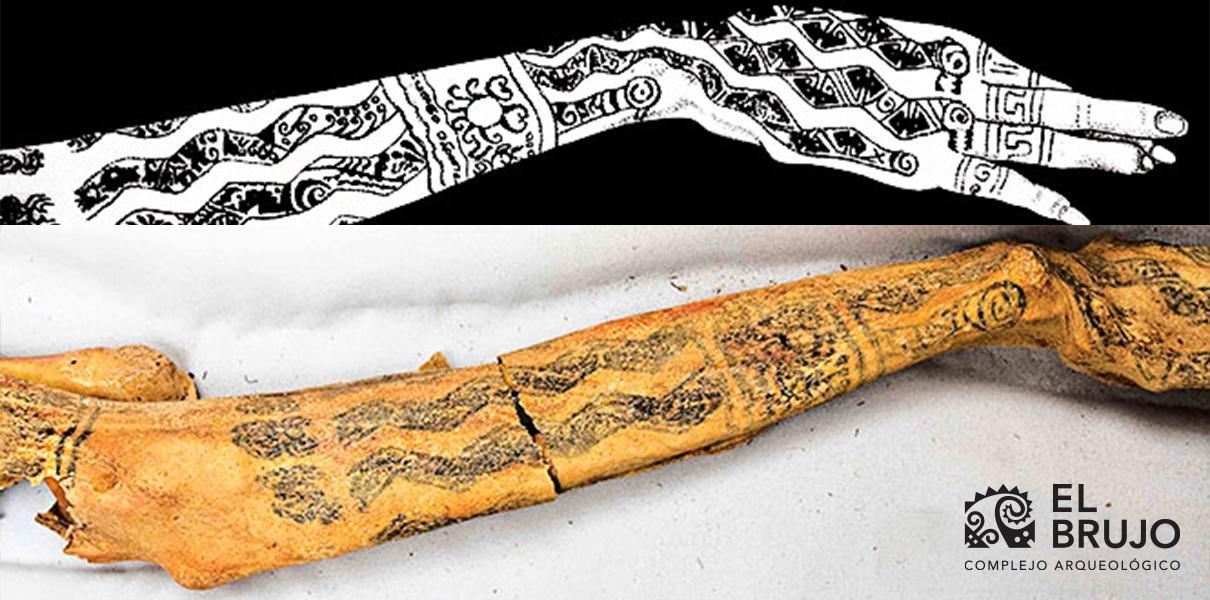
Cranial deformation, like the Lord of Sipán
An interesting fact about the Lady of Cao is revealed in her x-rays. In these, we observe that she had cranial deformation from a very early age. Her head had a slightly flattened occipital, a trait that is also observed in the Lord of Sipán, aside from other Mochica elite individuals.
The team took about three months to reveal the body of the Lady of Cao
After the discovery of the funerary context of the Lady of Cao, it took approximately three months for the researchers to finish removing each of the layers that composed her funerary bundle and to reveal her identity.
Find more interesting facts in our book on the funerary context of the Lady of Cao
Learn about the findings and the research of the burials of the Mochica elite in Huaca Cao Viejo, of the El Brujo Archaeological Complex, in our book "The funerary context of the Lady of Cao", which is available at the Economic Culture Fund.
Now that you know more about the Lady of Cao, we invite you to take the tour of the El Brujo Archaeological Complex site museum to delve even deeper into its history and that of the Mochica culture.
Also, don't forget that in El Brujo you can visit various huacas and archaeological sites, such as Huaca Cao Viejo, Huaca Cortada and Huaca Prieta, as well as space especially set up for mystical experiences. Don't miss it!
You can also read:
• Face of the Lady of Cao: Learn all the details about its reconstruction
• Lord of Sipán: Who was he and what culture did he belong to?
• El Brujo Site Museum: An invaluable educational resource about pre-Hispanic civilizations
Students , outstanding news


